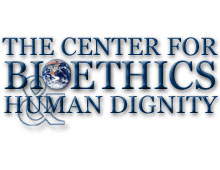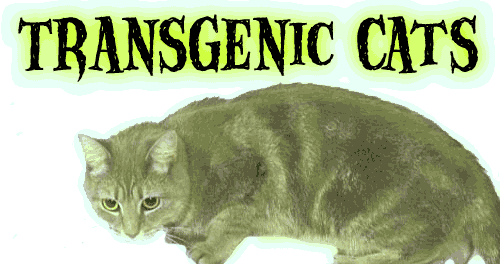Spider Goat News
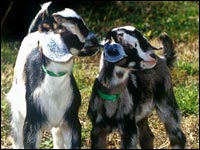 For decades, scientists have been in awe of the lowly spider and the magical
material it uses to spin its web. After all, strands of spider silk are a mere
one-tenth the thickness of human hair, yet they can snag a bee traveling 20
miles per hour without breaking.
For decades, scientists have been in awe of the lowly spider and the magical
material it uses to spin its web. After all, strands of spider silk are a mere
one-tenth the thickness of human hair, yet they can snag a bee traveling 20
miles per hour without breaking.
Ounce for ounce, spider silk is five times stronger than steel and about three times tougher than man-made fibers such as Kevlar. And that makes the material ideal for all sorts of interesting uses — from better, lighter bulletproof vests to safer suspension bridges.
But "harvesting" spider silk hasn't been easy. Unlike silkworms, spiders
aren't easy to domesticate. "Spiders are territorial carnivores, they eat each
other if placed in contact or in close proximity," says Jeffrey Turner,
president and CEO of Nexia Biotechnoloies, Inc. "It's like trying to farm
tigers."
Spider-less Silk
Now, researchers at the Quebec-based Nexia along with scientists at the U.S. Army's Soldier Biological Chemical Command (SBCCOM) in Natick, Mass., say they may have figured a way out of the sticky situation.
In the latest issue of Science, the researchers report that they've managed to successfully create artificial spider silk that's nearly as good as the real thing — and without involving a single spider.
How? Turner and his team of bio scientists took the genes responsible for creating spider silk into the cells of mammals, such as goats. Using those genes, the re-engineered goats were then able to produce in their milk the same protein that makes up spider's silk.
Turner says that by isolating those proteins from the goats' milk, they were then able to "spin" a thread remarkably similar to natural spider silk.
"On things like toughness and modulus of elasticity — the ability to stretch
without breaking — we're right on the money," says Turner.
Not Quite There Yet
Still, Turner does note there are still many other factors that need to be worked out before we see bridges built with man-made silk.
For one, the amount of silk-building protein that Nexia has been able to produce has been limited to a few strands. And it isn't clear yet how much protein may be able to be harvested in such a manner. Turner says his team expects to have a second research paper that would examine such details out by the end of this year.
And Nexia's experimental silk strands aren't an exact match — yet. Turner notes that they're only 20 percent to 40 percent as strong as natural spider silk.
"We still have more work to do," says Turner. "But to get this far is just a
step forward."
Herd of Silky Goats?
And moving even further forward is what really excites Turner and his military partners.
The most promising aspect of their research so far: The spider genes are faithfully passed on among the experimental goats. And that means producing more artificial silk might be as simple as breeding more of the genetically-enhanced goats naturally.
Since starting the experiment three years ago, Turner says Nexia's flock in Montreal has grown to nearly 50 goats. Within the next several years he expects the flock to scale up to "several thousand."
And as the company continues its research and grows out the herd, Turner believes that it won't be long before we could see commercial applications. Nexia has already plans to market the material, dubbed BioSteel, for use as fine suture material and biodegradable fishing line by 2003 or 2004.
If all goes well by then, he says it wouldn't be too much of a stretch to see lightweight body armor made of artificial spider silk within three to five more years.
ABCNEWS' Ned Potter and Paul Eng contributed to this report.
END
Monday, 21 August, 2000, 13:16 GMT
14:16 UK
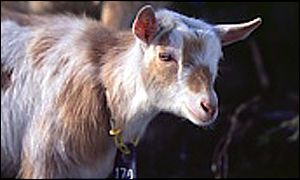 Modified
goat milk will contain web protein
Modified
goat milk will contain web proteinStronger and more flexible than steel, spider silk offers a lightweight alternative to carbon fibre.
Up to now it has been impossible to produce "spider fibre" on a commercial scale. Unlike silk worms, spiders are too anti-social to farm successfully.
Now a Canadian company claims to be on the verge of producing unlimited quantities of spider silk - in goat's milk.
Using techniques similar to those used to produce Dolly the sheep,
scientists at Nexia Biotechnologies in Quebec have bred goats with
spider genes.
New kids on the block
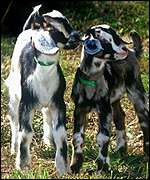
Webster and Pete - first of many
|
In fact they look like any other goat. But when they mate, it is hoped they will sire nanny goats that produce milk that contains the spider silk protein.
This "silk milk" will be used to produce a web-like material called Biosteel.
Naturally occurring spider silk is widely recognised as the strongest, toughest fibre known to man.
Its tensile strength is greater than steel and it is 25 percent lighter than synthetic, petroleum-based polymers.
These qualities will allow BioSteel to be used in applications where
strength and lightness are essential, such as aircraft, racing vehicles
and bullet-proof clothing.
Kind to humans
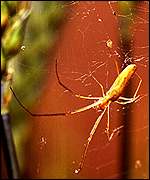
Spider's web is lighter and stronger than steel
|
Another advantage of spider silk is that it is compatible with the human body.
That means BioSteel could be used for strong, tough artificial tendons, ligaments and limbs.
The new material could also be used to help tissue repair, wound healing and to create super-thin, biodegradable sutures for eye- or neurosurgery.
"The medical need for super-strong, flexible and biodegradable materials is large," said Costas Karatzas, Nexia's Vice President of Research and Development.
"This breakthrough in goat nuclear transfer technology will move our
BioSteel program into the clinical testing phases earlier than by using
traditional strategies."
Cloning the future
Nexia's first transgenic goat, called Willow, was born in 1998. Willow's genes had been engineered to produce a therapeutic human protein.
A year later Willow was followed by Clint, Arnold and Danny, the world's first cloned goats.
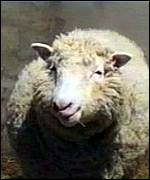
Dolly - world's first cloned sheep
|
Using a technique similar to that used to produce Dolly the sheep, cells were taken from the body of one goat and transferred into mature unfertilised eggs.
These eggs had had their original nuclei removed and replaced by nuclei taken from cells grown in culture and obtained from a separate, source goat.
Using spider genes pinpointed by researchers at the University of Wyoming, Nexia then succeeded in breeding Webster and Pete, the world's first goats to carry the spider web gene.
The two goats have now been transferred to a stud farm in New York state and are expected to start work siring a herd of "silk milk" goats this autumn.
Attempts to create artifical spider's web have failed in the past because it is difficult to make the very long protein chains found in the natural version.
The silk milk technique works because the way mammals produce milk proteins and spiders make silk proteins are broadly similar.
SOURCE:
BBC News | SCI/TECH | GM goat spins web based futureEND



